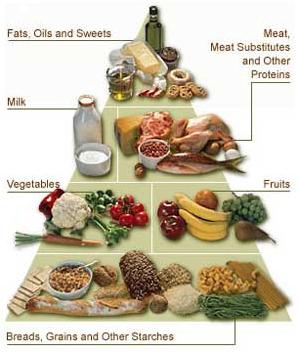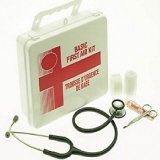|
How to Establish Healthy Eating Habits -The Food Pyramid Guide
The recommended food pyramid provides a simple guide to establishing healthy eating habits. The pyramid was originally established in the 1960s in response to the increase in heart disease, and to help people understand what it takes to stay healthy. There are several facets of the pyramid, which help you to analyze what you are eating and what you need to change in order to maintain your healthy eating habits. 
From here, various versions of the pyramid split. Some versions pyramids include fruit and vegetables in a single group, others split them into two groups. For the vegetable category, it is important to add two to three servings of vegetables to your daily diet. A serving generally consists of a cup of vegetables or vegetable juice. It is also key to eat a variety of different types of vegetables over the course of a week. The typical pyramid groups vegetables into five groups: * Dark green: such as broccoli and spinach. * Orange: pumpkin and sweet potatoes * Dry beans and peas: navy beans, kidney beans, lentils, tofu * Starchy vegetables: corn, potatoes, green peas * Other vegetables: cabbage, cucumbers, eggplant, tomatoes (Note: While we have given examples of the members of each group, it is certainly not an exhaustive list) With fruits, a cup of fruit or fruit juice, or a half-cup of dried fruit counts as a serving. Recommendations are one to two servings of fruit each day. The next part of the pyramid is the milk and dairy section. This group includes milk (including lactose-free), yogurt, cheese and other variations of this type of product. About three servings per day is the recommended amount. A typical serving of dairy would be a cup of milk or yogurt, 1½ ounces of natural cheese or two ounces of processed cheese. Next to last is the meat and beans group. This group contains meat, poultry, fish, eggs, nuts and dried beans. Choosing low-fat cuts of meat and poultry are key to a healthy diet. Five to six ounces of mean and beans each day is the recommended daily intake for this group. The highest level of the pyramid is the oils and fats level. While there are different types of oils and fats, this food group should be the smallest portion of a healthy diet. General recommendations are five to seven teaspoons of fats or oils per day; not very much. An ounce of nuts, such as peanuts or almonds, contains three teaspoons of oil. A tablespoon of mayonnaise contains about two and a half teaspoons. The food pyramid can provide excellent guidlines to ensure that your meals will be more balanced and nutritious. Though the number of servings in each group will vary based on your age, body type, activity level and other individual needs, the food pyramid can help you on your way to developing a pattern of healthy eating.
Return from Food to Open-Mind Publishing Home Page
|





 You are what you eat.
Yes, it's true, the food you eat has a dramatic effect on how your body functions.
You are what you eat.
Yes, it's true, the food you eat has a dramatic effect on how your body functions.






